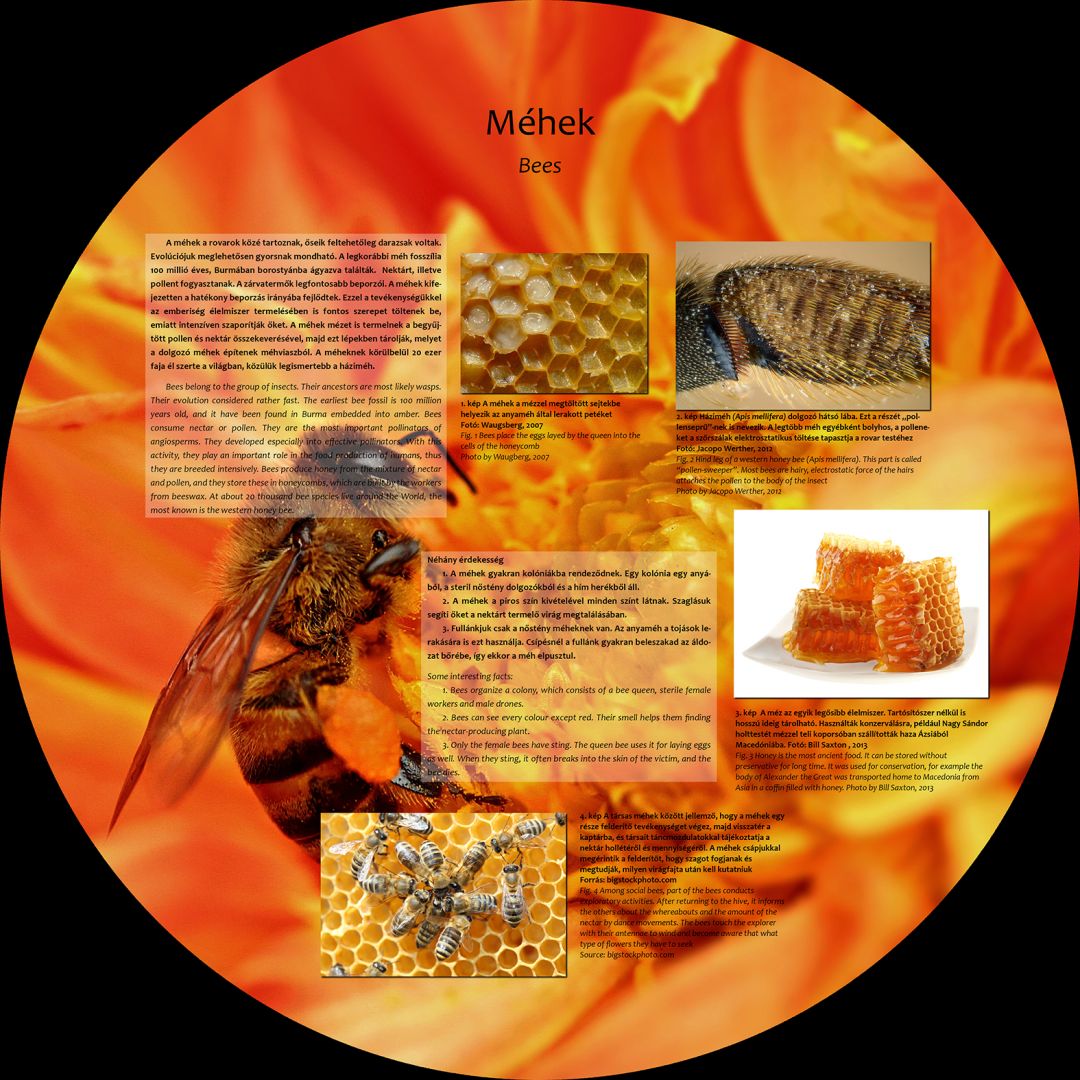Bees belong to the group of insects. Their ancestors are most likely wasps. Their evolution considered rather fast. The earliest bee fossil is 100 million years old, and it have been found in Burma embedded into amber. Bees consume nectar or pollen. They are the most important pollinators of angiosperms. They developed especially into effective pollinators. With this activity, they play an important role in the food production of humans, thus they are breeded intensively. Bees produce honey from the mixture of nectar and pollen, and they store these in honeycombs, which are built by the workers from beeswax. At about 20 thousand bee species live around the World, the most known is the western honey bee.
Some interesting facts:
1. Bees organize a colony, which consists of a bee queen, sterile female workers and male drones.
2. Bees can see every colour except red. Their smell helps them finding the nectar-producing plant.
3. Only the female bees have sting. The queen bee uses it for laying eggs as well. When they sting, it often breaks into the skin of the victim, and the bee dies.
Fig. 1 Bees place the eggs layed by the queen into the cells of the honeycomb. Photo by Waugberg, 2007
Fig. 2 Hind leg of a western honey bee (Apis mellifera). This part is called “pollen-sweeper”. Most bees are hairy, electrostatic force of the hairs attaches the pollen to the body of the insect. Photo by Jacopo Werther, 2012
Fig. 3 Honey is the most ancient food. It can be stored without preservative for long time. It was used for conservation, for example the body of Alexander the Great was transported home to Macedonia from Asia in a coffin filled with honey. Photo by Bill Saxton, 2013
Fig. 4 Among social bees, part of the bees conducts exploratory activities. After returning to the hive, it informs the others about the whereabouts and the amount of the nectar by dance movements. The bees touch the explorer with their antennae to wind and become aware that what type of flowers they have to seek. Source: bigstockphoto.com
